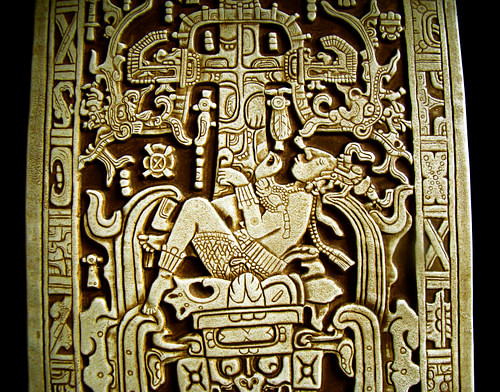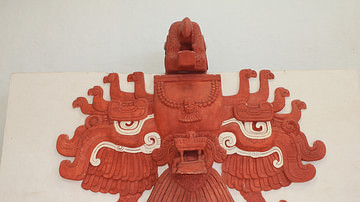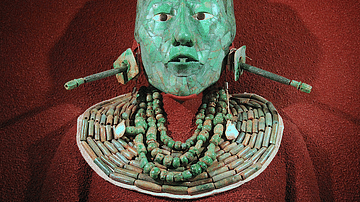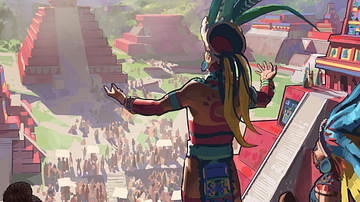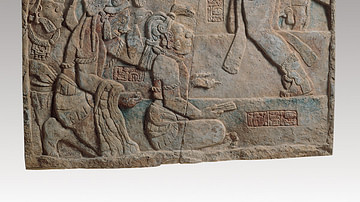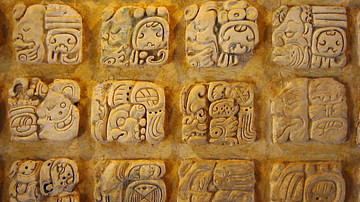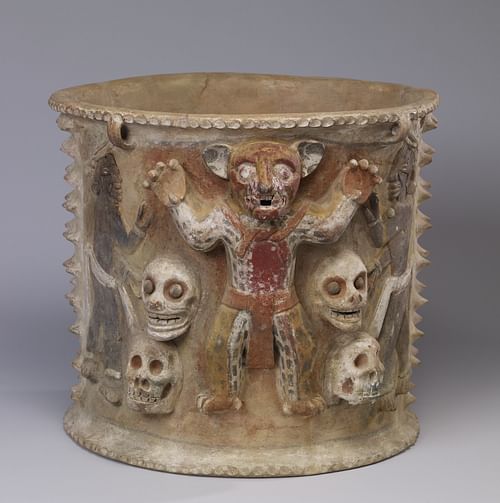
Xibalba (Shee-bal-ba) was the name the K'iche Maya gave to the underworld. For the Yucatec Maya the underworld was known as Metnal. The name Xibalba translates as 'Place of Fright', which indicates the terror the place had in the Maya imagination. There was, unfortunately, not much chance of escaping the place, either. Ideas such as leading a good life and avoiding eternal torment by not doing bad things were not part of the Maya belief system, as only those who died a violent death avoided Xibalba. The underworld was a truly fearsome place, strongly associated with water; it had its own landscape, gods, and blood-thirsty predators. Xibalba was also the scene of many adventures by the heroes of Maya mythology, especially the Hero Twins.
The Geography of Xibalba
For the Maya Xibalba lay to the far west, hence the great number of burials made on the islands of Campeche, located off the west coast of the Yucatan peninsula, making it the most western Maya territory. Xibalba was entered through a cave or area of still water in Tlalticpac, which was the surface of the earth and the first of the nine underworld levels. The Milky Way was also considered an entrance to Xibalba and the road along which souls walked to meet their fate. The Maya, believing the underworld had nine different levels, represented this idea in the gigantic stone pyramids they built as tombs for their kings which often have nine tiers. See, for example, the Temple of the Inscriptions at Palenque, Temple I at Tikal, or the Pyramid of Kukulcan at Chichen Itza.
The Maya believed that the underworld was ruled by a group of gods (possibly 9 or 14), known collectively as the lords of the underworld. These have fearsome names and include 1 Death and 7 Death (the two most important), Pus Master, Bone Sceptre, Skull Sceptre, Jaundice Master, Blood Gatherer, and Bloody Claws. Many of these lords could occasionally come up to the world of the living where they would spread misery and disease. The Maya also believed that each astronomical god had its own manifestation in the underworld. For example, the Sun God K'inich Ajaw, when he was travelling through the underworld at night, became the Jaguar God of the Underworld.The most important Maya religious book, the Popol Vuh, describes some details of the geography within Xibalba. The underworld is vast with as much variety in landscape as the outside world of the living. Further, there are two great rivers, perhaps more, which run through it. To reach the ninth level of Xibalba, many trials and dangers had to be faced by the dead. These included the crossing of dangerous waters and high mountains, rivers of blood, attack by spinning obsidian knives and arrows, and even the sacrifice of one's heart. To help the soul survive such an ordeal, the dead were buried or cremated with useful pieces of equipment such as weapons, tools, weaving kits, precious goods like jade, sustaining food such as hot chocolate, and even dogs (real or pottery effigies) to act as companions and guides.
Xibalba in the Popol Vuh
As we have seen, the Maya expected to undergo trials in Xibalba, and if they could use their skills and intelligence, then they had a chance to outwit the terrible demons and trials awaiting them there. One of the most celebrated stories involves the Maize God (Hun Hunahpu or 1 Ajaw) and his brother 7 Hunahpu. Playing a noisy game of ball one day, the pair angered the lords of the underworld who summoned them to descend into Xibalba. After suffering many trials and horrors, the siblings played another game of ball. This time, on losing the game, they were sacrificed and buried under the ballcourt, whilst the Maize God's head was placed in a calabash or cacao tree. Later, a daughter of one of the lords of the underworld, Blood Maiden, saw the head and after a little conversation and with the head spitting in her hand, she miraculously became pregnant with twins. These siblings were Hunahpu (or Hun Ajaw) and Xbalanque (or Yax Bahlam), the famous Hero Twins of Maya mythology, who would gain fame as great hunters, practical jokers and superb ball players.
History repeated itself and the Hero Twins, like their father and uncle, were also summoned into Xibalba and, after being held captive in terrible chambers with Death Bats, jaguars, terrible cold, and fires, were also made to play a game of ball. This they won, but it did them no good as they were executed anyway, or rather, the lords of the underworld hoped to kill them, but the twins acted first and leapt into a tremendous fire. However, the gods of the outer world were not best pleased at this result, and so they brought the twins back to life. Now disguised as dancers, the pair wreaked havoc in Xibalba, slew the lords of the underworld, and even managed to resurrect their father the Maize God. The three, along with a bevy of naked maidens and now laden with treasure, then used a canoe to finally escape from Xibalba and return to the land of the living. The whole myth is most probably a colourful metaphor for the planting of maize seeds into the earth and their subsequent growth back above the earth's surface.
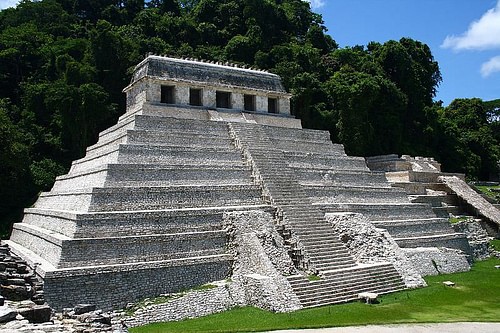
Xibalba in Art & Architecture
The various gods and characters involved in the myths concerning Xibalba are frequently seen in Maya art, such as pottery decoration, stone reliefs, incised bones, and cave paintings - especially at Naj Tunich. The imagery of souls in the underworld is often horrific. Flesh falls from the body, eyes hang from their sockets, and bodily functions are no longer controlled. One of the most striking representations of Xibalba is on the c. 683 CE sarcophagus of the king of Palenque, Pakal the Great, found deep within the Temple of Inscriptions at Palenque. Here the dead ruler is depicted falling backwards into the huge, gaping centipede jaws of the underworld. The underworld was also represented in Maya architecture. Pyramids which were intended as tombs, as noted above, had nine platforms to represent the nine levels of the underworld. In addition, at Utatlan the ballcourt is thought to represent Xibalba, and the South Building of the Nunnery complex at Uxmal is also, with its lower level and nine doorways, thought to visually represent Xibalba.
